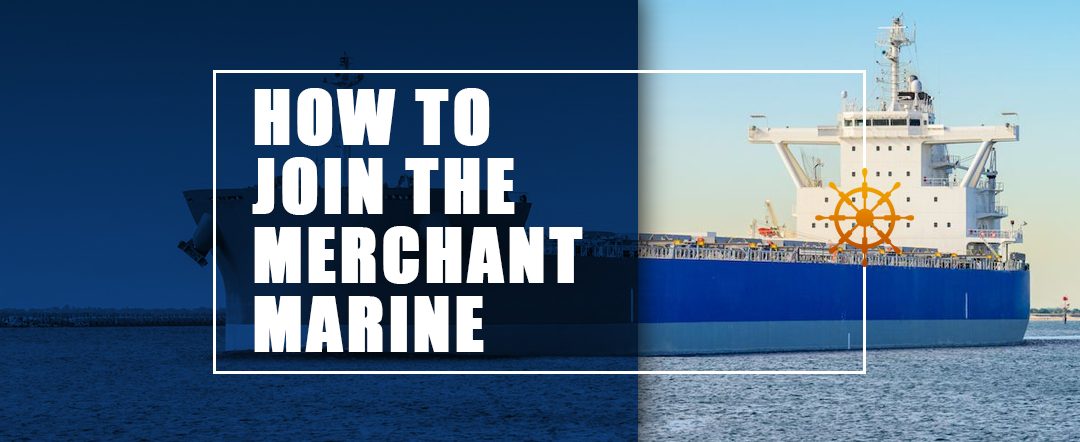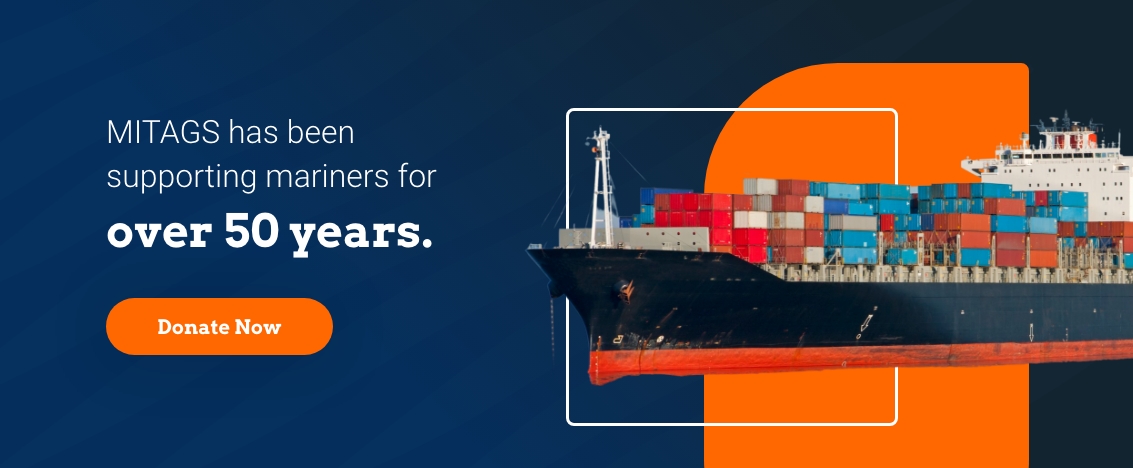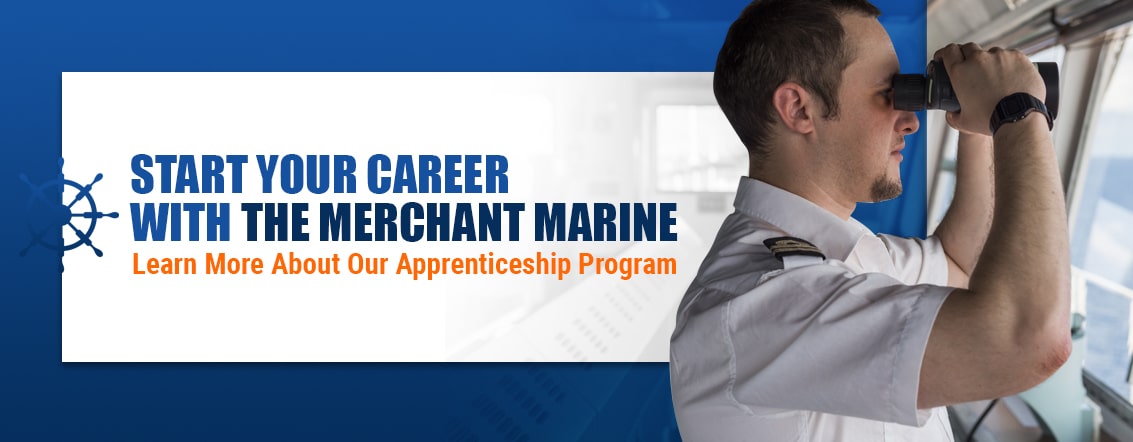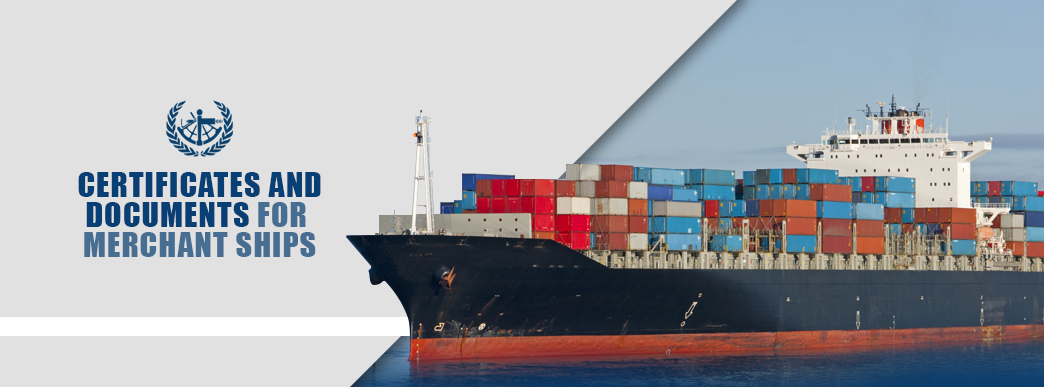If you’re looking for a career that offers challenging physical work, substantial pay and an opportunity for adventure, the Merchant Marine might be right for you.
The Merchant Marine, sometimes called the merchant navy, consists of civilian vessels — such as tankers and cargo ships — that import and export goods to other countries. The U.S. transports 75% of its trade goods by sea, and mariners, also known as water transportation workers, serve on these vessels to make sure the products get to their destinations safely and on time. Mariners may be pilots, mates, captains or seamen, but they all play a role in ensuring the smooth travel of commercial vessels.
Why should you join the Merchant Marine, and how can you get started? Read on to learn more about the process.
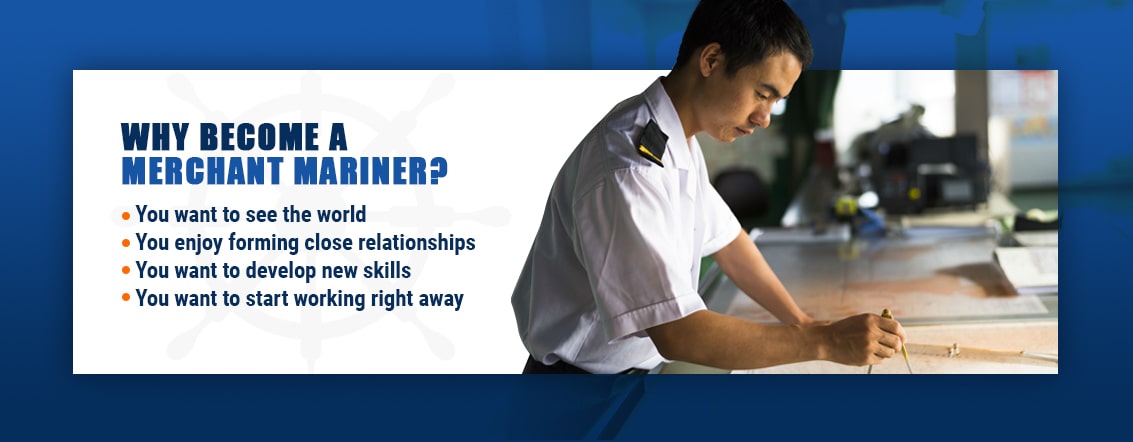
Why Become a Merchant Mariner?
You should become a mariner for a variety of different reasons.
- You want to see the world: Mariners work all over the globe and travel to destinations that many people never see, even on vacations.
- You enjoy forming close relationships: Teamwork is indispensable in the Merchant Marine. Living and working in close quarters with fellow crew members allows you to form strong bonds as in few other lines of work.
- You want to develop new skills: Being part of the Merchant Marine requires strong communication skills, resourcefulness and self-discipline. If you succeed in the Merchant Marine, you can build a stable career wherever you choose, either by working your way up the ranks or when you leave for another job.
- You want to start working right away: Unlike many other fields, the Merchant Marine accepts applicants without college degrees. For those who want to jump straight into work, an entry-level position with the Merchant Marine is an appealing option.
How to Become a Merchant Mariner
Most prospective mariners must typically undergo certification with the U.S. Coast Guard. The following are some steps you can take if you are interested in becoming a merchant mariner.
- Choose your desired career path.
- Apply for a TWIC.
- Get a physical and drug screening.
- Apply for an MMC
- Participate in an Apprenticeship program.
Choose Your Desired Career Path
Mariners can choose from among different career paths within the Merchant Marine. The three possible options are the engineering, deck and steward’s departments. Prospective mariners should decide on their intended career paths early, since your chosen career path will determine your requirements for the merchant mariner credential (MMC).
- Engine department: Members of the engine department include engineers, electricians, mechanics and oilers. They make sure the machinery on a vessel operates correctly.
- Deck department: Members of the deck department include merchant seamen and lifeboatmen. They assist with the day-to-day functions of the ship.
- Steward’s department: Members of the steward’s department provide the ship’s food.
Apply for a TWIC
Before applying for a prospective mariner must first apply for a Transportation Worker’s Identification Credential (TWIC). The TWIC indicates that the applicant presents no security threat. To receive a TWIC, an applicant must pass rigorous FBI and Department of Homeland Security background checks, which typically include an immigration status check, a criminal background check and a terrorist watch list check.
Get a Physical and Drug Screening
To become a mariner, an applicant will have to take a physical and undergo drug screening. Passing these tests is critical. Conditions such as heart disease and specific psychiatric disorders may be disqualifying for those who don’t take medications to control them.
Apply for an MMC
For the MMC, applicants will have to show proof of having passed drug tests and medical examinations, including tests of their physical fitness, vision and hearing. They must also provide proof of their citizenship and required experience.
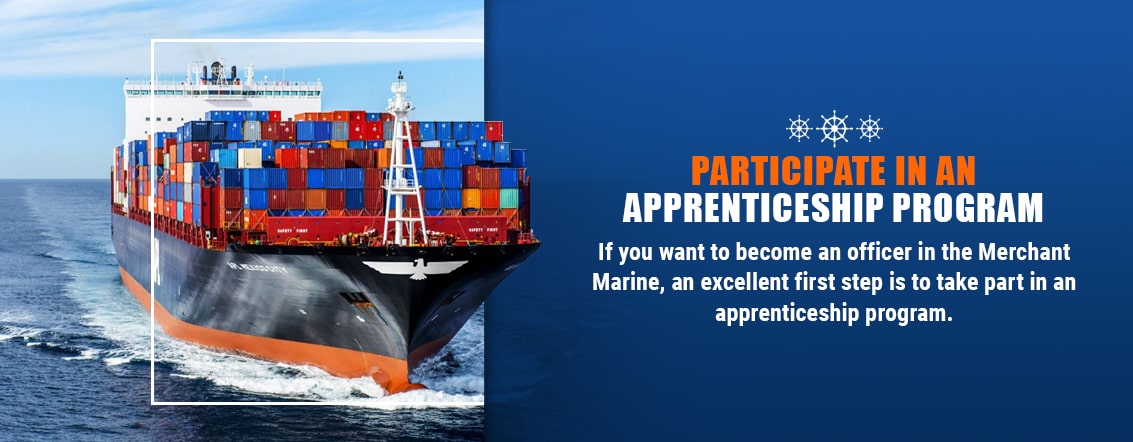
Participate in an Apprenticeship Program
If you want to become an officer in the Merchant Marine, an excellent first step is to take part in an apprenticeship program. Merchant Marine apprenticeship programs such as the MITAGS Maritime Apprenticeship Program (MAP) give prospective applicants the experience and credentials they need to become successful mariners.
MAP takes a little over two years. It involves 26 weeks of classroom education and 360 days of sea time. The onboard maritime training reinforces and enhances the lessons learned in the classroom, so apprentices have many chances to get hands-on experience and put their new skills into action. The training vessels belong to reputable partner shipping companies, and each apprentice remains with the same company throughout training to become familiar with a consistent set of practices.
Completing the program qualifies apprentices to sit for mate-level licensing exams. Those who finish MAP will hold Able Seaman Limited and STCW able seafarer-deck qualifications as well as STCW OICNW credentials. They will have the skills, experience, and license necessary to become deck officers on commercial vessels.
Frequently Asked Questions
Below are some FAQs and answers about the Merchant Marine.
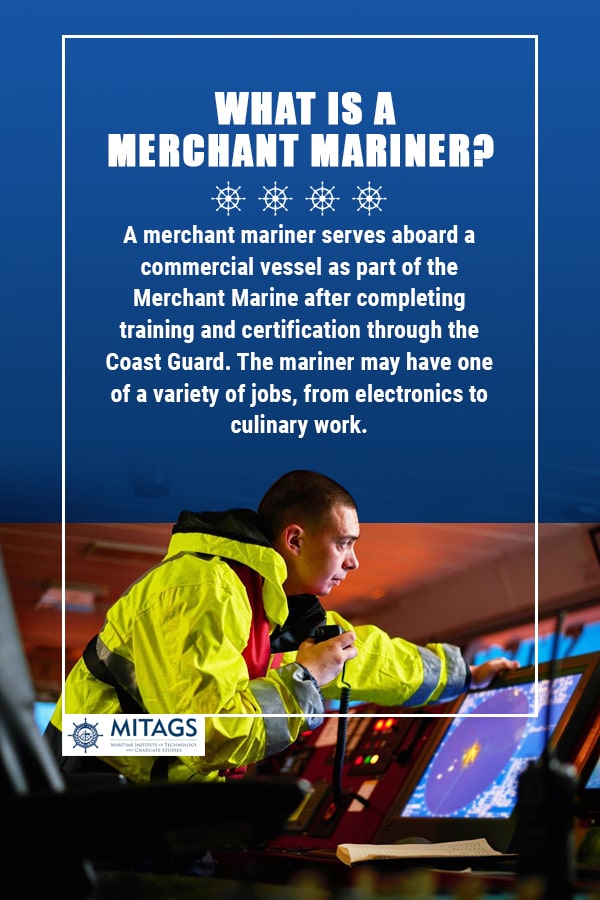
What Is a Merchant Mariner?
A merchant mariner serves aboard a commercial vessel as part of the Merchant Marine after completing training and certification through the Coast Guard. The mariner may have one of a variety of jobs, from electronics to culinary work. Mariners help keep a vessel operating smoothly and ensure that the vessel, cargo and passengers get safely to their destination.
Mariners may work on a variety of ships. Common possibilities oceangoing container ships, bulk carriers, towboats, ferries, dredges, and cruise ships. Mariners’ careers may take them to just about anybody of water, from the oceans to the Great Lakes to many harbors, canals, and rivers.
Some different types of mariners include the following.
- Captains or masters: A captain commands a vessel and runs its operations. Captains commonly steer or operate the ship, direct crew members, ensure compliance with safety protocols, purchase equipment, arrange for maintenance, supervise loading and unloading and keep official logs and records.
- Mates or deck officers: Mates are responsible for the vessel’s operation when the captain is off duty. The chief mate has the highest level of authority and assumes command of the ship if the captain becomes unable to fulfill the necessary obligations. The chief mate is typically in charge of the cargo and passengers, whereas second and third mates take responsibility for navigation and safety. Mates often engage in activities such as taking watches, managing the activities of the deck crew, assisting with docking, monitoring the vessel’s speed, direction and position, supervising the loading of cargo and making announcements to passengers as required.
- Pilots: Pilots are not part of a vessel’s crew, but may go aboard to help the crew navigate an unfamiliar waterway. Pilots typically guide vessels into harbors and within confined waterways such as rivers and canals. Some are harbor pilots — they work for a port and assist the many vessels that enter and leave the port throughout the day.
- Ordinary Seaman or deckhands: Deckhands maintain and operate the vessel and its deck equipment, except for the engine or motor. New deckhands are ordinary seamen, and sailors with more experience are able seamen. Able seamen usually make up most of the crew and perform more complicated tasks than ordinary seamen. Deckhands may stand watch, paint, chip away rust, clean the interior of the ship, handle mooring lines, tie barges together, load and unload cargo, assist passengers and sometimes steer the ship under the supervision of an officer.
- Ship engineers: Ship engineers maintain the ship’s engine, boilers, pumps, generators and other equipment. They may perform tasks such as working on the ship’s electrical systems, starting the engine, regulating the ship’s speed, performing maintenance checks, monitoring refueling needs, taking inventory of supplies and parts and keeping official logbooks.
- Marine oilers: Marine oilers work in the engine room. They may perform tasks such as lubricating gears, shafts and bearings, reading temperature and pressure gauges, performing maintenance, assisting with machinery repairs, operating pumps, cleaning tanks, and assisting with cargo.
How Long Does It Take to Become a Merchant Mariner?
The time required to become a mariner depends on the route an applicant takes. A person who joins as an ordinary seaman may become a mariner after passing the required courses and exams and receiving the necessary credentials, which may be a matter of only a few months. An applicant who goes through an apprenticeship will likely be in training for over two years, though much of that training time is sea time. If an applicant goes to the Merchant Marine Academy, the timeline will be four years or more.
Is There an Age Limit for the Merchant Marine?
There is a merchant marine age limit, with 16 years old being the youngest age a person can be. If a person is old enough to work full-time — typically 16 years old — that person is old enough to apply for an MMC. However, requirements vary from company to company, and some shipping companies may not accept workers who are not yet 18. Some endorsements, such as the lifeboatman endorsement, may also require the mariner to be at least 21. A third mate or similar officer must be at least 19.
There is no upper age limit for who can join the Merchant Marine. Some people who have retired from their first careers have gone on to successful second careers as Merchant Mariners.
How Much Does a Merchant Mariner Make?
After training, in which trainees may receive modest stipends, the Merchant Marine pays very well, especially for entry-level work. As we also indicate in the FAQ section of our apprenticeship page, the median pay for a tugboat deck officer is $400 a day. There is no centralized organization that sets a pay scale, though, so pay in other sectors of the Merchant Marine varies, and it also varies with education and experience. The Bureau of Labor Statistics reports that the median income for a mariner is just over $54,000 per year.
Is the Merchant Marine Part of the Military?
No. Though the Coast Guard manages certification and training, mariners are civilians. The merchant marines are not a part of the military. Some of them work on ships that support the U.S. Navy, but aren’t active members of the military. The Merchant Marine receives support from the U.S. Maritime Administration, an agency of the Department of Transportation. In wartime, the Merchant Marine has sometimes transported military personnel and equipment.
How Much Do Merchant Marines Get Paid?
The salary of a merchant marine varies by the training received. The median salary of a merchant marine is around $55,000, but the range of salaries can vary from $27,000 up to $120,000.
What Are the Merchant Marine’s Physical Requirements?
Mariners must pass a vision test and a physical fitness test. A prospective mariner must demonstrate strength, agility and flexibility, as determined by the examining medical professional. If the examiner doubts the applicant’s ability to perform essential shipboard functions or meet the demands of an emergency response, or if the applicant’s body mass index is 40 or higher, the examiner may require a demonstration of specific abilities.
For vision, current deck standards require that a mariner have at least 20/40 corrected vision in one eye and at least 20/200 uncorrected vision in the same eye. Engineering, tankerman, radio operator and MODU standards require at least 20/50 corrected vision in one eye and at least 20/200 uncorrected vision in the same eye.
Start Your Career With the Merchant Marine — Learn More About Our Apprenticeship Program
Start your career with the Merchant Marine by receiving the hands-on training and sea time you need to sit for your mate’s license and become a deck officer. Our apprenticeship program has received approval from the Coast Guard and the Department of Veterans Affairs and has produced many successful and well-respected mariners over the years.
Contact us today to learn more.

